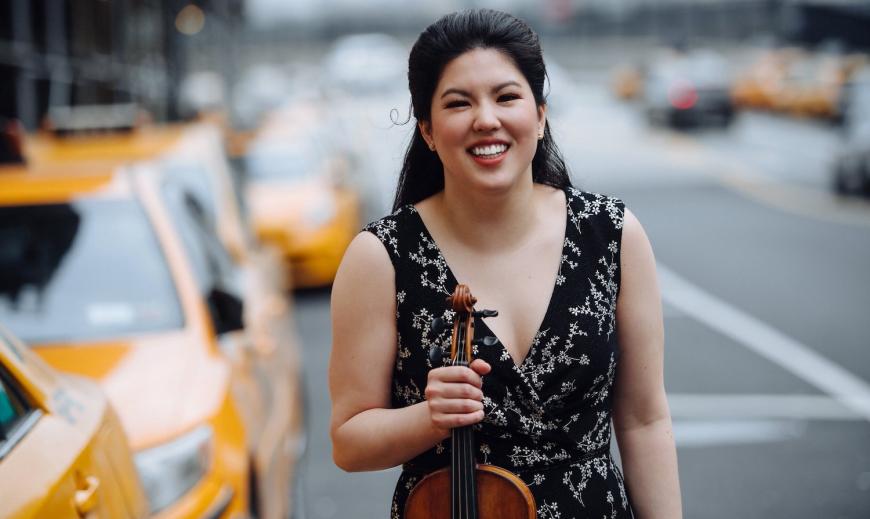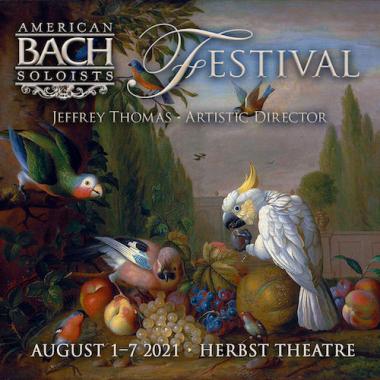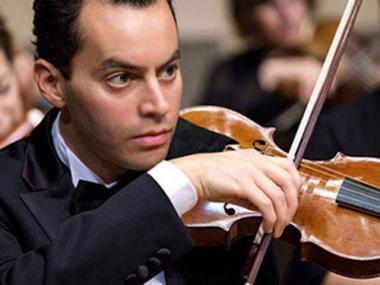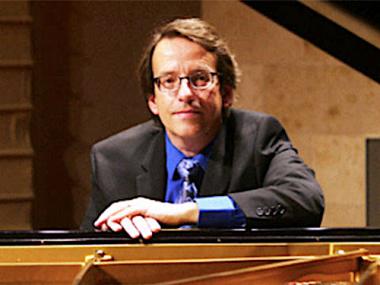
Like Shakespeare, Bach is an inexhaustible, deep well. Audiences, performers, conductors, stage directors, film-makers, and composers keep tapping a source that never runs dry. Adapted and abused, scrupulously researched and run through the Moog synthesizer, transcribed and transported across the centuries, his music offers seemingly infinite possibilities.
In the second of five programs in its annual summer festival, the invaluable American Bach Soloists built a Tuesday, Aug. 3, concert at Herbst Theatre around various composers’ responses to some of the Baroque master’s most familiar works. Bach Explorations: Transformation featured works by Rachmaninoff, Eugène Ysaÿe, and Franz Liszt. In a double-team approach, Bach’s G Major Cello Suite arrived with piano accompaniment in a Friedrich Wihelm Stade arrangement after one originally made by Robert Schumann.

Fittingly, Bach got to speak for himself first. With an arresting stamp of her foot, Rachell Ellen Wong launched into a splendid account of three movements from the Violin Partita in E Major. Full of dynamic contrasts and tonal shifts from brawny to delicate, the performance captured the work’s breadth and amplitude. Wong played as if the music were in fascinating conversation with itself in the Preludio, posing one phrase as a kind of open-ended question and responding with another. The Gavotte had the rustic charm of someone doing ballet in clog shoes, and doing it well. A fleet and fluent Gigue closed out the set.
Rachmaninoff’s 1933 Suite drawn from the same partita, handsomely performed as it was by pianist Steven Bailey, came off as a somewhat literal-minded exercise. Quoting extensively from Bach, the composer gradually elaborated with some cross-handed complications and harmonic enrichment in the left hand chords. But there was something superficial, a too-easy charm, running through the three movements. The Gavotte had the light, lissome feel of something by Poulenc. Rachmaninoff’s characteristic brooding lyricism rarely broke through, as if he were afraid of taking too many liberties with the material.

Ysaÿe’s succinct but incisive Prelude (“Obsession”) from a 1923 sonata made a refreshing chaser. Here, in violinist Noah Strick’s keen performance, phrases from Bach’s E Major Partita and a fleeting shadow of the Dies Irae theme loomed up and vanished in quizzical, shard-like phrases. The result had an anxiety-of-influence effect. The movement wasn’t so much a tribute to Bach as a dramatized attempt to escape his long shadow. Strick made wit and uneasiness unlikely, vivid partners.
Liszt, as he so often does, supplied the flashy showpiece on the bill, with his Variations on themes from the death-haunted Bach cantata Weinen, Klagen, Sorgen, Zagen (1862). The sprawling piano solo was preceded by a rather airless performance of a chorus and the chorale from the cantata by organ and string players under artistic director Jeffery Thomas’s baton.
Bailey returned to power his way through Liszt’s pyrotechnics. The piece started out with a dark and declarative invocation of Bach, the Baroque high solemnity decorated with tremolos and trills and driven by a magnetic chromaticism. Soon enough pounding passagework, thunderous chords, and finger-bending runs took over. Bailey powered through it all impressively.

Liszt, who delighted in transcribing other composers (Mozart, Beethoven, Donizetti, Verdi, and others were on his menu along with Bach), eventually makes them all sound like Liszt. And so it is here, another feat of egotistical tribute, by turns exhilarating and exhausting.
The sparsely attended, 85-minute evening hits its low point with the Stade/Schumann treatment of Bach’s wonderful G Major Cello Suite. While cellist Gretchen Claassen gamely made her way through the piece, pianist Kenneth Slowik supplied a series of bland rolled chords and occasional counterpoint forays. The result was a work of chamber-scale tedium that domesticated and denatured the suite.
As Thomas observed in his remarks, both Schumann’s wife, Clara, and Brahms urged him not to publish this listless experiment. Stade couldn’t leave bad enough alone in his own arrangement of an ill-starred arrangement.
While Bach can certainly take on the inventions and colors of others, he can also, in case we needed the reminder, manage very well on his own.




